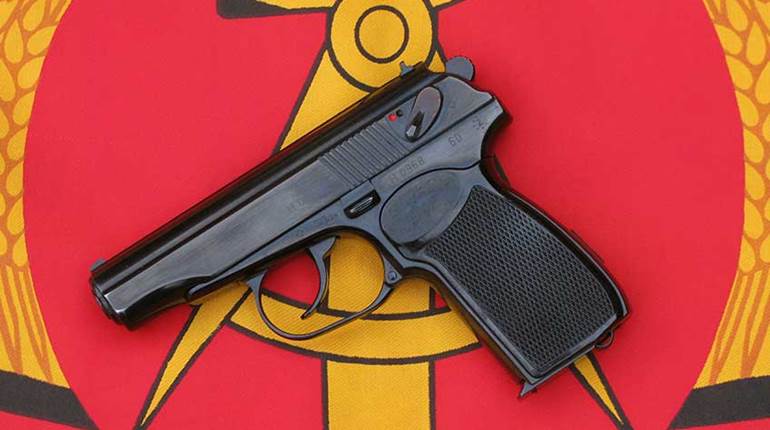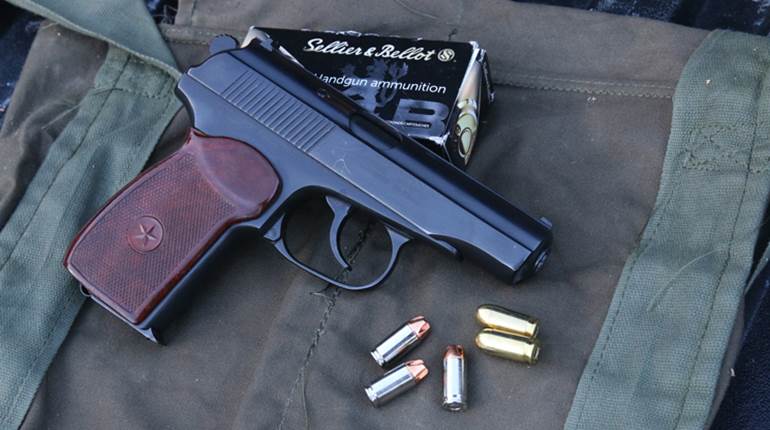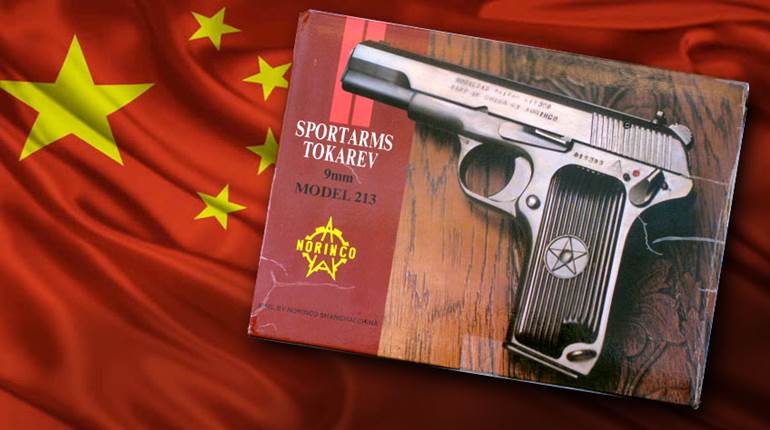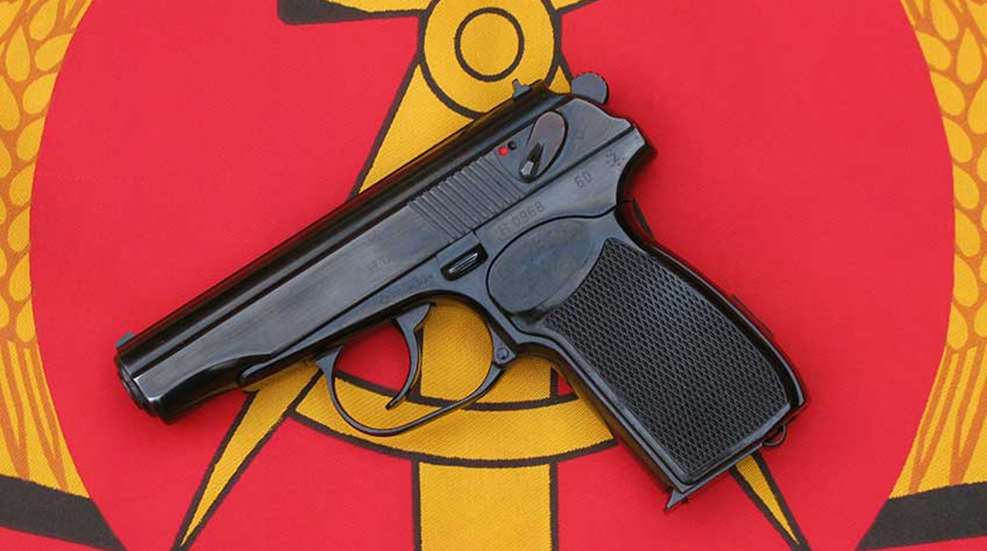
This article, "The East German Makarov: A Cold War Classic," appeared originally in the August 2015 issue of American Rifleman. To subscribe to the magazine, visit the NRA membership page here and select American Rifleman as your member magazine.
The East German Makarov, also known as the Pistol M, or PM, is a fascinating relic of the Cold War era. While the Makarov pistol was originally designed and manufactured in the Soviet Union, it was also produced by other communist countries including China, Bulgaria and, most relevant here, East Germany.
The East German variant was considered a rarity in the past, but after the collapse of the erstwhile nation in 1990, many of these pistols were imported into the United States where they found their way into the hands of shooters and collectors as military surplus.
The Makarov Is Born
The story of the East German Makarov begins, of course, with the Soviet Makarov. The Makarov was originally designed by Nikolay Fyedorovich Makarov, a prominent young Soviet arms designer. After World War II, the Soviets started the process of selecting a new service pistol to replace the TT-33 (Tula Tokarev 33).
Several different designs were submitted for evaluation including ones by Makarov, Korovin, Rakov, Simonov, Sevryugin, Voyevodin and Baryshev. Ultimately, the Makarov was picked as the design that best met the specifications, and it was officially designated the PM (Pistol Makarov). The PM was the Soviet service pistol from the time it was adopted in 1951 until about 1991.
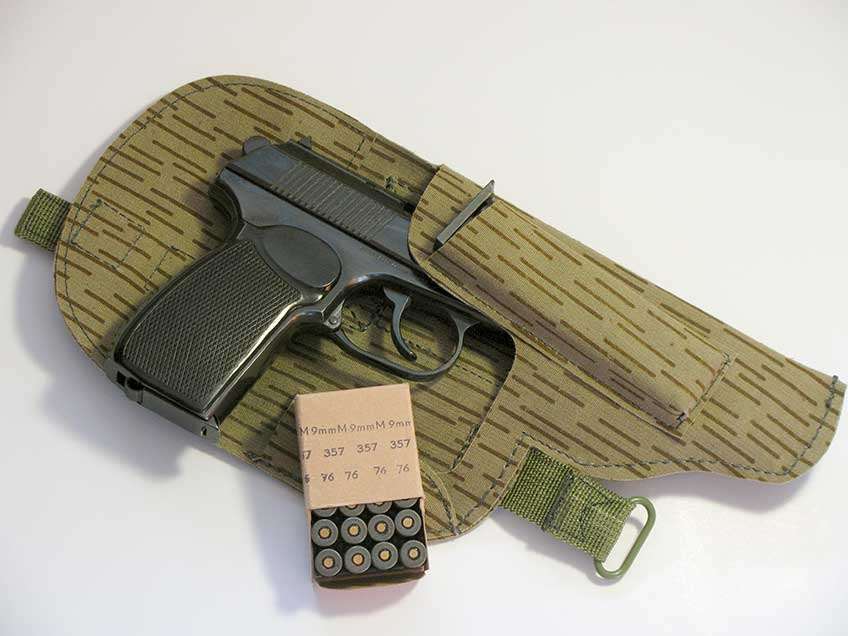
There has been speculation that the pistol and the 9 mm Makarov cartridge were strongly influenced by the Walther PP pistol and the experimental 9 mm Ultra cartridge given that the Russians had access to the Walther factory at the end of World War II. However, the extent to which these earlier Walther designs impacted the development of the Makarov pistol and its cartridge has not been documented.
East German Production Begins
Most Communist Bloc/Warsaw Pact countries manufactured and used arms similar to that of the Soviet Union, and East Germany was no exception. For example, East Germany made its own variants of the AKM and SKS rifles, as well as the Makarov.
One source indicates that the East German Model PM was built under license at the Ernst Thalmann manufacturing plant in Suhl, Germany. It is unclear exactly when production began, but it appears that prototypes were made starting in 1958. The early pistols were manufactured using some die cast parts that exhibited breakage, therefore the factory reverted back to using machined parts fairly early in the production run.
It has been reported that plant officials were actually imprisoned for the problems related to the faulty manufacturing methods. It appears that very few of the pistols made in 1958 and 1959 have survived based on the limited numbers seen. The manufacturing issues apparently were worked out and production continued through 1965, making for a relatively brief production run.
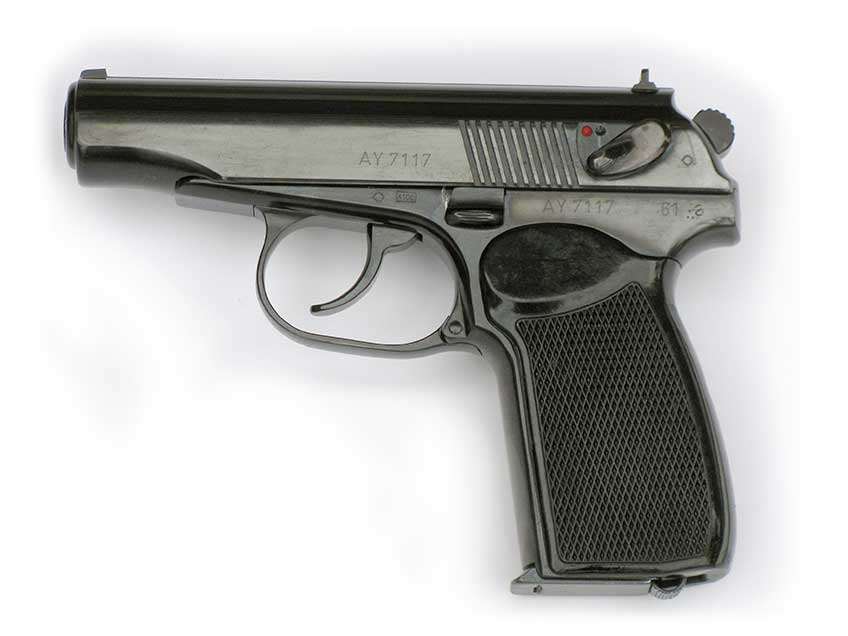
It is worth noting that several hundred commercial Makarov pistols were made from leftover East German parts and, possibly, some new parts in the mid-1990s. These “post-unification” pistols are marked “Simson-Suhl” and are essentially commercial versions of the military guns.
The only difference is that the hammer was modified to allow the slide to be retracted when the safety is in the “on” position. Some were imported and sold in the United States in the 1990s and bear the importer marking “CDI Swan. Vt.”
What Makes The Makarov Tick
The East German Makarov is a double-action/single-action semi-automatic pistol of blowback design that has a magazine capacity of eight rounds. All have a rich blue/black finish on the frame, slide and many of the small parts.
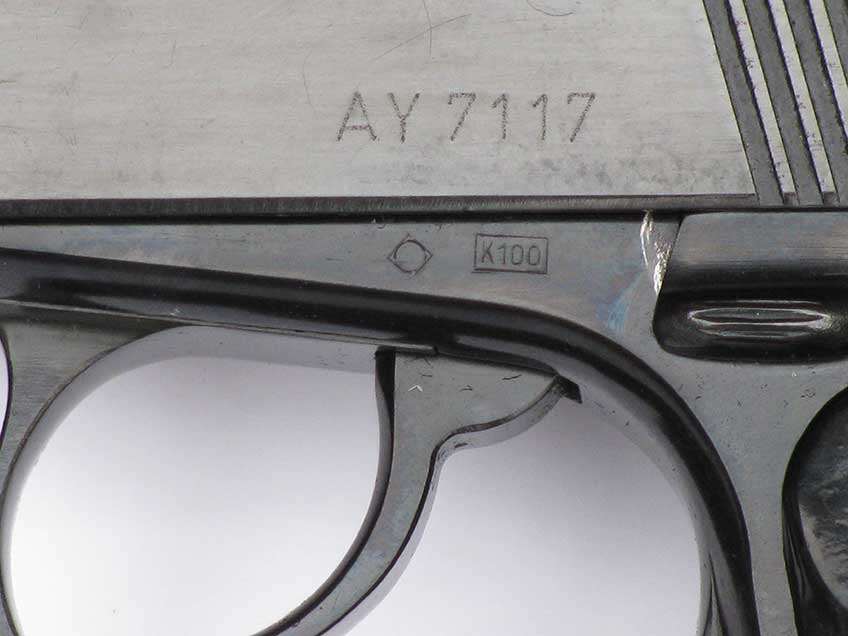
Most have a brown-to-plum-colored safety, hammer and extractor, although some have a mottled finish. It is believed that these parts have a brownish coloration due to finish being applied after they were hardened. The barrel is chrome-lined, which protects the bore somewhat from the effects of corrosively primed ammunition.
The barrel has four grooves with a right-hand twist. The slide has 10 grasping grooves on the left side and 17 on the right. The overall fit and finish on these pistols is outstanding and is considered by some to be equal to or better than that found on many modern commercial pistols.
Most guns have one-piece stocks made of a jet-black-colored plastic with fine checkering, although a few have been noted with a reddish-brown flecked appearance. Some pistols have a black or green cloth lanyard that is secured inside the stocks using a metal clip. Others have simplified lanyards that are simply knotted and exit through an extra hole in the back of the frame.
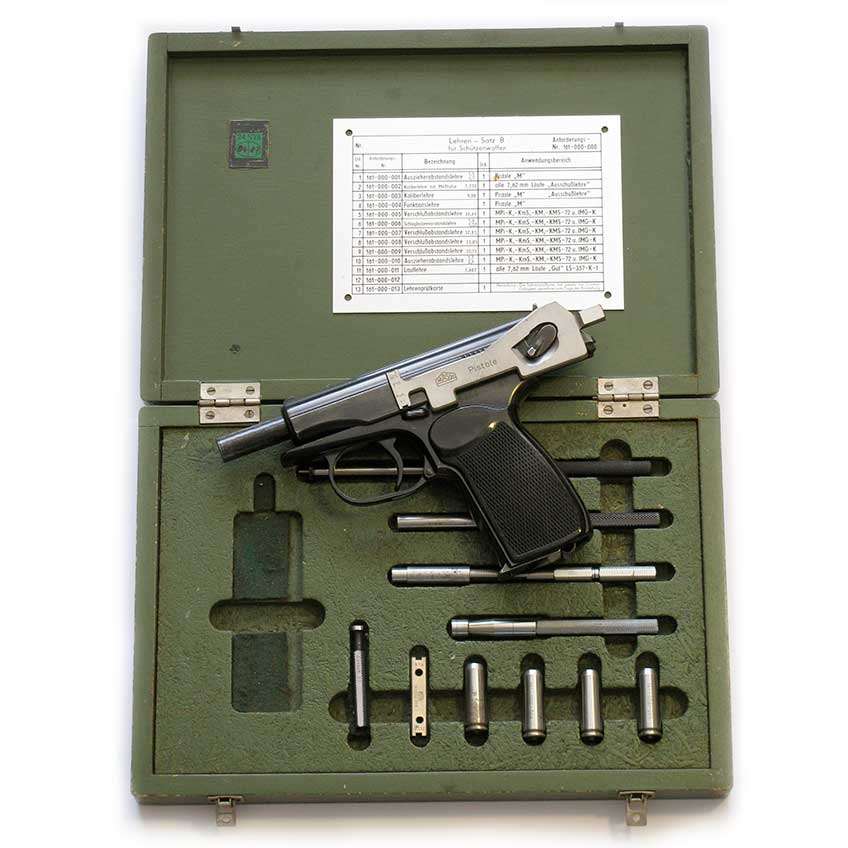
The magazine is open on both sides and is usually nicely blued and finished. The magazine follower has a protrusion that acts as a slide hold open. It can also be depressed to load the magazine more easily.
The Makarov is easily fieldstripped. First, ensure the pistol is unloaded and remove the magazine. Next, pull the trigger guard down, pull the slide to the rear, then lift it up off the frame’s rails. Full disassembly is easily accomplished, but it is not necessary unless a part requires replacement.
The PM is chambered for the 9x18 mm Makarov cartridge designed by Boris Semin. The round is also known as the 9 mm Russian Makarov or 9 mm Makarov. The bullet diameter of the Makarov round is greater than that of most 9 mm cartridges; 0.363" compared to 0.355"/0.356" for the 9x19 mm (Luger) and 9x17 mm (.380 ACP) rounds.
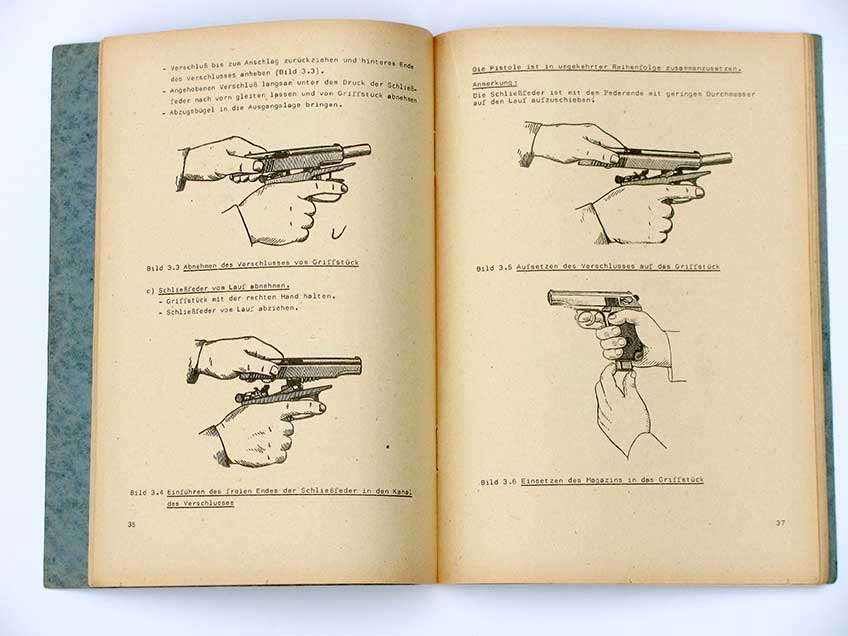
The cartridge body essentially has no taper, which makes it well-suited for blowback pistols. Cartridges produced by East Germany were steel-cased and came packaged 16 rounds to a box.
Markings Tell The Story
Interestingly, the PM did not originally have any markings on it to indicate its model designation or country of origin. The pistol’s letter code and four-digit serial number appear on the left side of the slide and frame. Several internal parts including the hammer—on some pistols—also have the last two digits of the serial number electropenciled on them.
The frame usually has a number under the stocks, but this is a part number since it does not correlate with the serial number. It appears that the serial number is electropenciled or put on using a series of small dots as opposed to being stamped. This results in a rather lightly etched appearance, which belies the quality of the pistol. The magazines often have numbers electropenciled on them, but they rarely match the serial number of the pistol.
All pistols have a two-digit date code immediately after the serial number that represents the year of manufacture. The date codes that have been personally observed are 59, 60, 61, 62, 63, 64 and 65, but the date code 58 has also been reported. It is possible that the 58- and 59-dated pistols were recalled due to parts breakage during the early years of production or perhaps they were simply made in smaller quantities.
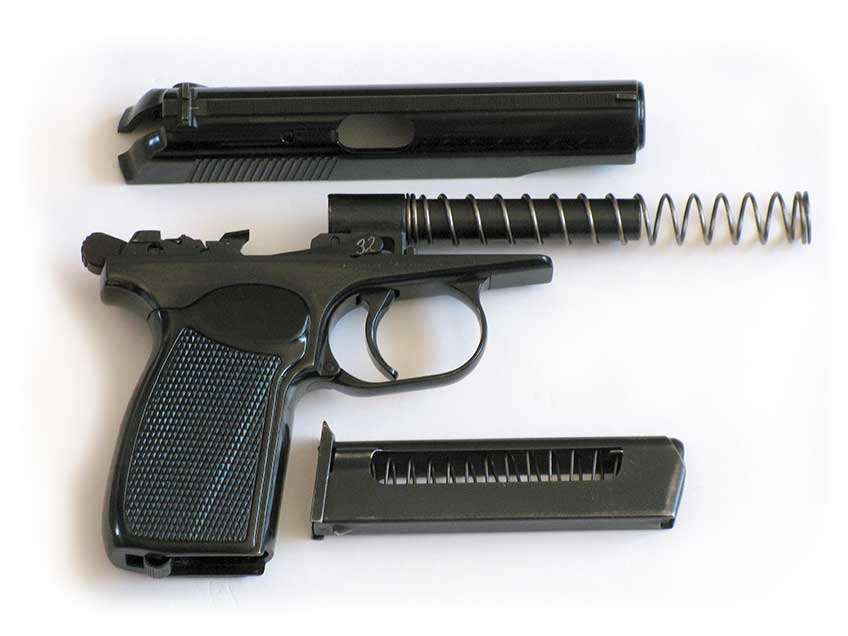
Pistols also have one or two letters that precede the four-digit serial number. It appears that each unique letter code was for a block of 9,999 pistols. A range of serial numbers has been observed across the various letter codes for the years 1960 through 1965 (ranging from 00XX to 96XX), which supports the idea that each unique one- or two-letter code was for a production run of 9,999 pistols. It is not known precisely how many pistols were made, however the number could be several hundred thousand.
The following letter codes have been observed or reported (the original listing of letter codes found at makarov.com was expanded based on additional pistols observed):
1958: S 1959: J, K, L, N, U 1960: B, C, F, G, H, M, T
1961: AR, AS, AQ, AT, AU, AV, AW, AX, AY, AZ, D
1962: AO, AP, BR, BS, BT, BU, BV, BW, BX, BY, BZ
1963: BN, BO, BP, DA, DB, DE, DF, DK, DL, DP,
1964: ES, ET, EV, EW, EX, EZ
1965: ER, FB, FD, FH, FF
A small but distinguishing marking found on all pistols is a “K100” in a rectangle on the left side of the frame forward of the slide stop. This is an inspection acceptance mark. There is also a small diamond with circle inside stamp on the rear of the left side of the frame and the left side of the slide to the right of the safety that is a proofmark.
It has been noted that many pistols have markings below the serial number. These are usually lower-case letters such as s, a, z, or y with marks at different points around them that are believed to document various steps in the inspection process.
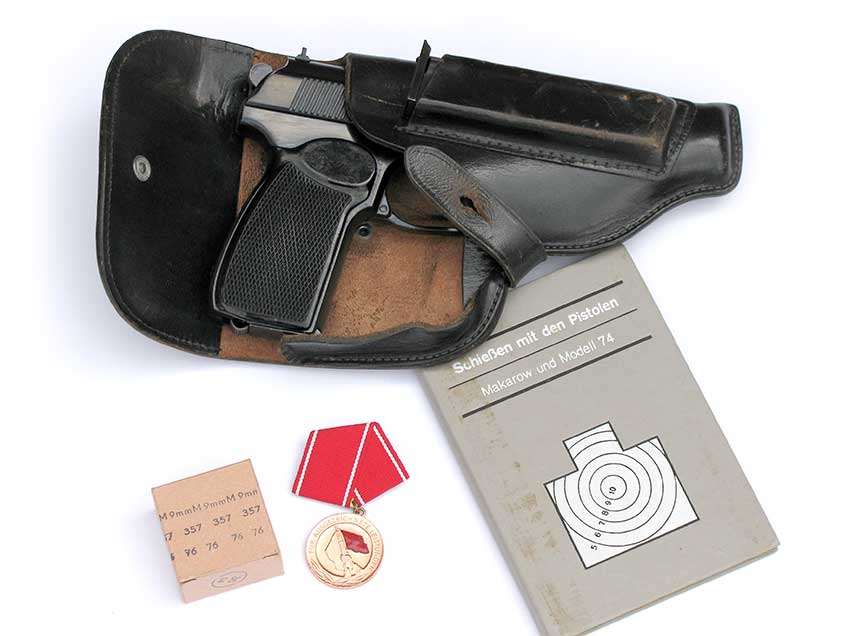
Some pistols have been reported to have the letters “LSA” marked on the left side of the frame. It has been suggested that stands for Landespolizei Sachsen-Anhalt, and was stamped on guns that continued to be used after the fall of East Germany.
Accessories to Complement the Makarov
Holsters are the main accessory seen for East German Makarovs. Several variations of leather holsters were made in brown, black and white—used by the army, police and traffic police, respectively. They are of a basic utilitarian design having a flap with a strap and stud closure, and a side pouch to hold a spare magazine.
A shoulder holster with a separate magazine holder was also made. A popular holster with collectors is a cloth one in raindrop camouflage pattern, although it was not officially used in service. An army jacket with an inside holster was also produced. None of the holsters had a provision for a cleaning rod.
Another accessory is the seldom-seen .22-cal. conversion kit that was used for practice or training. An armorer’s parts kit, which is a wooden container that holds a wide variety of tools and gauges, is still seen occasionally today. Original technical or repair manuals are another desirable, but uncommon, accessory.
Makarov Importation To The United States
Several different companies imported East German Makarovs into the United States starting in the 1990s. The type, size and location of import stamping varied a great deal by importer. Collectors tend to prefer pistols with smaller, less obtrusive markings because the appearance of the pistol is closest to original.
The main importers are the following: Int’l Arms Co. (Sacramento, Calif.) This is reported to be one of the first importers of East German Makarovs. The number following the MM marking appears to be the sequential number of the pistol imported. The pistols have the following marking on the front of the grip strap: ERNST THAELMANN MOD. M 9MM IACO SACCA GERMANY MMXXX Century Arms Int’L (St. Albans, Vt.)
The majority of pistols observed were imported by Century Arms. The following markings are typically on the right side of the frame: Germany CAI ST ALB VT 9mm Mak Classic Distributers, Inc. (Swanton, Vt.) The following marking is at the right rear of the frame in very small font: Makarov 9 x 18 Germany CDI Swan VT Cole Distributing (Smithville, Ky.) The following marking is stamped in very small font on the right side of the frame or on the bottom of the frame above the trigger area: Cole Dist Smith KY Ruko (Buffalo, N.Y.)
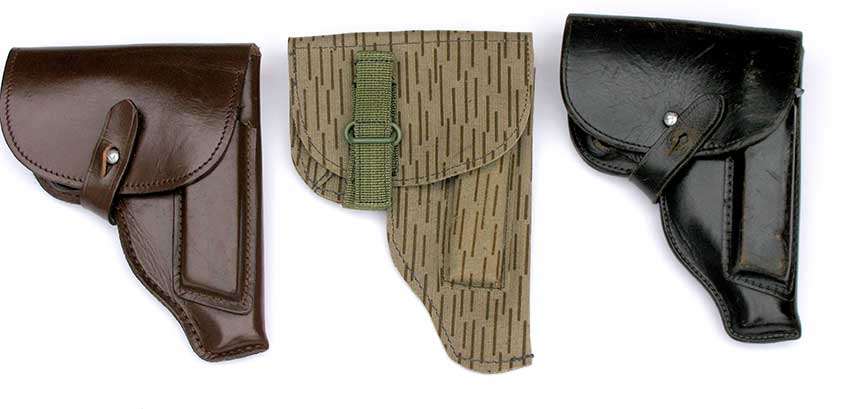
The following lengthy, three-line marking is found on the right side of the slide of some of the pistols: Mod Makarov Cal 9mm Makarov Made in Germany by Fahrzeug-u Jagdwaffenwerke Ernst- Thalmann, Suhl Imported by RUKO Products Inc., Buffalo, NY Other Ruko-imported pistols have the following marking on the right side of the slide: Makarov Cal 9 x 18 Ruko Products Made by Ernst Thalmann Buffalo, NY Suhl Germany.
Some pistols were imported with an East German maintenance manual or log that was serial-numbered to the pistol. This is considered an unusual and desirable accessory. Most imported pistols had a thumb shelf installed, which was needed to gain points to allow importation into the United States. Century Arms Int’l manufactured a colorful, eye-catching box for the pistols. Most imported pistols were in excellent or better condition.
These pistols were very reasonably priced when imported, typically around $150. They were often advertised as Stasi (secret police) pistols, which added to collector interest.
Based on observations at gun shows and online gun auctions, more pistols dated 60, 61 and 62 are seen relative to other years. Any pistol with a 58 or 59 date is considered a great rarity and is seldom seen for sale.
Further research is needed to determine how many pistols were actually imported into the United States; however, the number appears to be fairly significant since they are routinely seen for sale at gun shows, gun shops and at online auctions.
So What's The Makarov's Appeal?
The East German Makarovs have wide appeal to collectors and shooters for a variety of reasons. First and foremost, the East German variant is a beautifully made handgun with a high level of fit and finish. They are prized by their owners because they are considered to be the most well-made of the Makarovs.
The gun also has a strong following among collectors of Communist-Bloc pistols and those who collect Makarovs specifically. Collectors like the fact that the pistol was not significantly altered for importation (other than the import marking and grips with a thumb rest), which is not the case for other surplus pistols (such at the TT-33, which had an external safety added).
Astute collectors also appreciate the engineering of the Makarov and its simplicity. For example, the pistol has only 25 parts, including the stock and stock screw, which is an extremely small number for a pistol of its type.
The Makarov also has a small but loyal following for those who use it as a highly reliable concealed carry handgun. Others simply enjoy the Makarov because of its excellent shooting qualities. For all of these reasons, the price of these pistols continues to rise, with typical specimens selling between $350 and $500.
The East German Makarov is an intriguing pistol that is emblematic of the bygone Cold War era. Interest in the PM is growing as collectors have come to appreciate its fine qualities and numerous variations.












